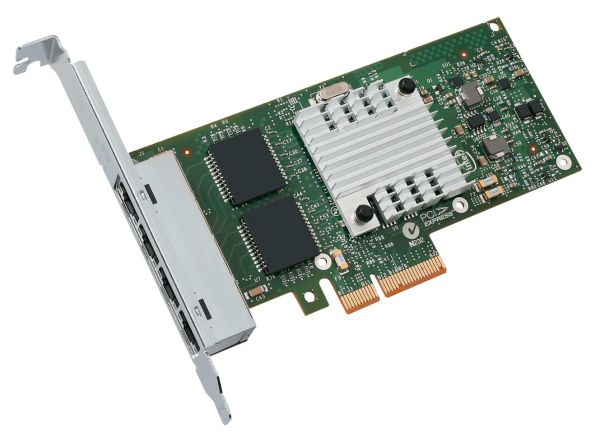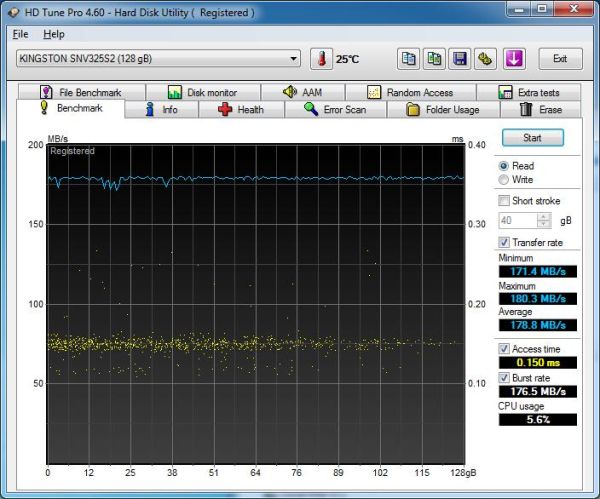Synology DS211+ SMB NAS Review
by Ganesh T S on February 28, 2011 3:50 AM EST- Posted in
- IT Computing
- NAS
- Synology
For the purpose of NAS reviews, we have setup a dedicated testbed with the configuration as below. The NAS is directly connected to the testbed (using as many Cat 5E cables as there are ports on the NAS) without a switch or router inbetween. This is done in order to minimize the number of external factors which might influence the performance of the system.
| NAS Benchmarking Testbed Setup | |
| Processor | Intel i5-680 CPU - 3.60GHz, 4MB Cache |
| Motherboard | Asus P7H55D-M EVO |
| OS Hard Drive | Seagate Barracuda XT 2 TB |
| Secondary Drive | Kingston SSDNow 128GB |
| Memory | G.SKILL ECO Series 2GB (1 x 2GB) SDRAM DDR3 1333 (PC3 10666) F3-10666CL7D-4GBECO CAS 7-7-7-21 |
| PCI-E Slot | Quad-Port GbE Intel ESA-I340 |
| Optical Drives | ASUS 8X Blu-ray Drive Model BC-08B1ST |
| Case | Antec VERIS Fusion Remote Max |
| Power Supply | Antec TruePower New TP-550 550W |
| Operating System | Windows 7 Ultimate x64 / Ubuntu 10.04 |
| . | |
In addition to the Realtek GbE NIC on-board the Asus P7H55D-M EVO, four more GbE ports are enabled on the system, thanks to the Intel ESA-I340 quad port GbE ethernet server adapter . With a PCI-E x4 connector, the card was plugged into the PCI-E x16 slot on the Asus motherboard.
Since the Synology DS211+ has only 1 GbE port, there was no need to team the four ports in the ESA-I340.
Intel NASPT is used to benchmark the NAS device. In order to ensure that the hard disk transfer rate is not a bottleneck, NASPT is run from the secondary drive in the testbed (the Kingston SSD). With average read and write speeds of 178.8 MB/s and 167.8 MB/s, it is unlikely that a single GbE link NAS can be limited in performance due to the test system. However, a link aggregated NAS could be affected. Fortunately, as we will see in the next few sections, this wasn't the case for the 5big storage server.
All file copy tests were also performed using the SSD. The file copy test consists of transferring a 10.7 GB Blu-Ray folder structure between the NAS and the testbed using the robocopy command in mirror mode (on Windows) and the rsync -av command (on Linux).
There are three important sharing protocols we investigated in the course of our evaluation of the DS211+. In the next few sections, you will find NASPT and/or robocopy/rsync benchmarking results for Samba, NFS and iSCSI sharing protocols. Each section also has a small description of how the shares were set up on the NAS. The NASPT benchmarks were run in Batch mode thrice, giving us 15 distinct data points. The average of these 15 values is recorded in the graphs presented in the following sections. The robocopy and rsync benchmarks were run thrice, and the average transfer rate of the three iterations is presented alongside the NASPT benchmarks.













49 Comments
View All Comments
Rasterman - Monday, February 28, 2011 - link
a comparison to the previous model would be niceMadMan007 - Monday, February 28, 2011 - link
The prices on NASes like this always make me shudder and laugh at the same time. For much less than $400 you could build something like a low-end C2D setup (used parts, if not a new cheapie combo) that is still reasonably power efficient (My e7300 WHS box with 4 HDDDs pulls 50W idle with a 450W 80+ PSU which honestly is a touch large. Spending more on modern parts like a Clarkdale would get closer to this device's power draw.) That costs me an extra ~$22 in electricity each year over this device except I could probably put it together for around $200-ish nowadays...so 8-10 years to make up the difference? Oh, and it' much more expandable and also acts as an emergency backup PC.I know these are for 'consumers' who don't know jack about assembling a PC but for anyone who can I just don't see the appeal or economic advantage. I guess it's good to have a little basic PC knowledge, I kind of feel bad for the consumers who 'have to' buy these hings.
MadMan007 - Monday, February 28, 2011 - link
*note: not that price with 4 disks, just the hardware for an apples-apples comparisonWackyDan - Monday, February 28, 2011 - link
"I know these are for 'consumers' who don't know jack about assembling a PC"Bull. I have two Synology NAS and I'm a systems engineer for a rather well known tech company. I have several PC's in this house, sitting around idle in my attic. I chose Synology for the energy consumption, to be quiet, and SIZE. They don't crash, auto restart on power loss, and have been bulletproof. *which with my wife, is important.
If you want to pay likely more than the $22 in extra power than that is your opinion, and right to it. Some of us like more refined solutions, and for NAS Synology is it.
V864 - Monday, February 28, 2011 - link
Power consumption has implications beyond simply cost of energy. Your homebrew system would require more than twice the UPS capacity than the DS211+ to attain the same level of uptime if you lose power.Exelius - Monday, February 28, 2011 - link
Don't bullshit yourself, you really couldn't build anything comparable for less than $400 unless you have a crapton of parts just lying around. Then there's the issue of your time having any value at all... Old PC equipment isn't necessarily cheaper; after it's been end-of-lifed it disappears from the marketplace pretty quickly. I guess there's always eBay, but anyone who's tried to buy computer hardware off ebay knows what a crapshoot it can be between mislabeled or non-functional gear. You can blow your savings in a hurry.There's also something to be said for a headless unit that you can manage through a web browser. At the end of the day, you're going to spend somewhere in the ballpark of $400 and have a device with similar functionality, but you'll put in a LOT more work. Why not just buy the $400 device and be done with it?
fteoath64 - Tuesday, March 1, 2011 - link
Not true. Here is the parts list:Intel Atom D525DW OEM = $70
2GB DDR3 SODIMM = $25
Thermatake Element Q case = $80 { included 90w PS}
Total = $175
Download ZFSGuru in a USB stick install and configure. Done.
You have 2 SATA ports , 6 USB ports, a PCI slot and mini-PCIe slot for expansions.
blckgrffn - Monday, February 28, 2011 - link
Performance looked OK for raw data access, but how does it stand up to something like iometer? Hit this thing and give us an idea of how its cache works, etc. :)ganeshts - Monday, February 28, 2011 - link
I agree IOMeter can give info about the cache behaviour.However, NASPT is the benchmark which actually gives the real world performance. More info here:
http://cpu.xbitlabs.com/articles/networking/displa...
That said, I will definitely try to integrate IOMeter in the next NAS review.
Pandamonium - Monday, February 28, 2011 - link
I own a DS209 myself, and I think there's a major flaw in the Synology DSM OS.There is no way to schedule SMART tests on your disks. You have to manually initiate the tests on each drive. Unless Synology has some kind of unpublished mechanism whereby it verifies data integrity, I'm pretty sure that automated SMART tests are a necessity.
For most home users, a NAS is a place where you can centralize your music, photo, and video collection. And while I realize RAID 1/hybrid RAID isn't true "backup", it is a relatively acceptable solution. I think we are all more likely to have a HDD fail on us before we are robbed or our houses suffer catastrophic damage.
That said, say you've got 1 TB of stuff stored on the NAS. That data isn't generally accessed on a regular basis. We all have media that hasn't been accessed in years. When one of your drives begins to go, you might lose a bit here and a bit there. And you would have no way to know that your drive is failing unless you were manually running SMART tests or other HDD diagnostics. When all is said and done, your RAID 1 or hybrid RAID would be inconsistent. What guarantee is there that the Synology DSM could tell which hard drive contains the "right" data?
As far as the competition goes, QNAP definitely supports automated/scheduled SMART testing.